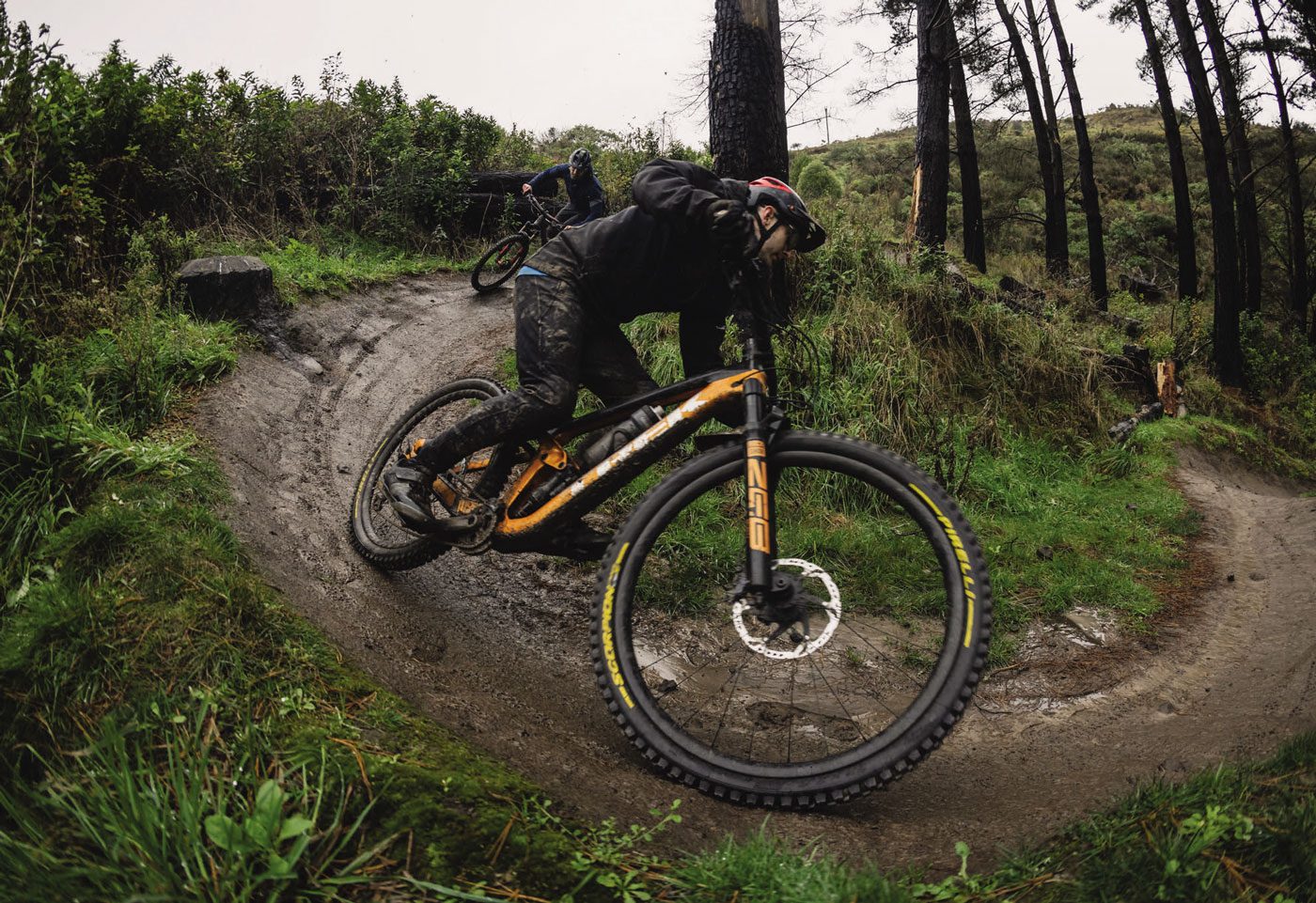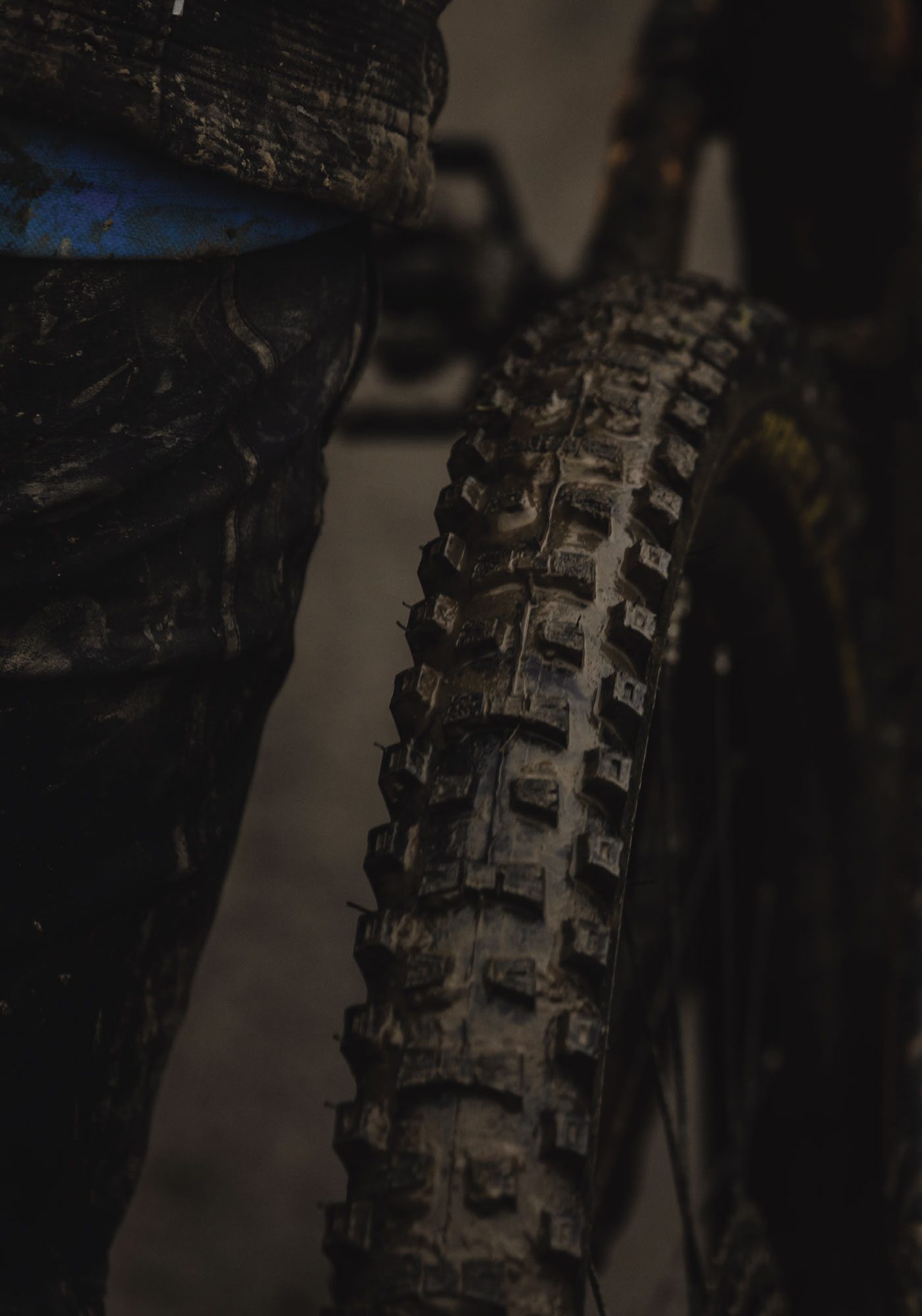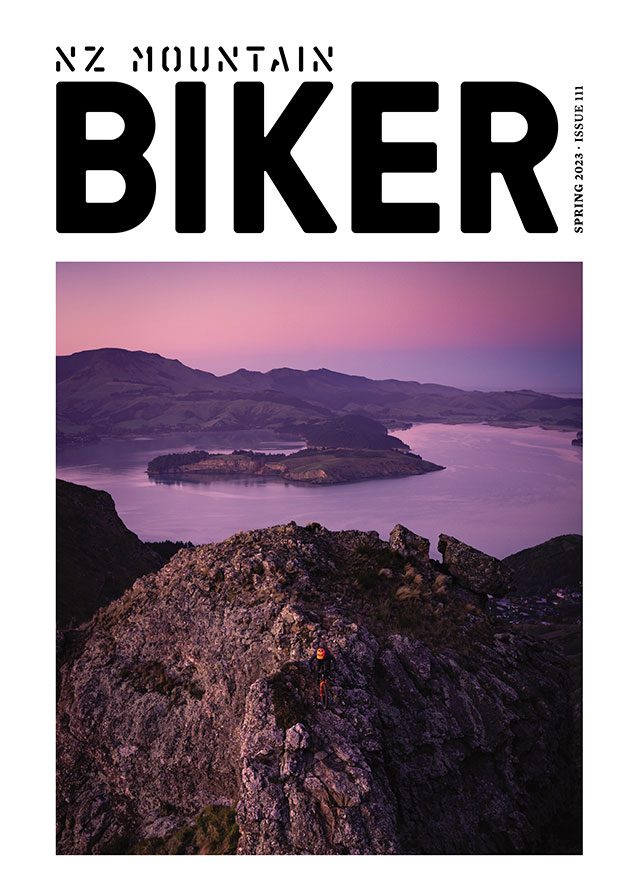WORDS: LESTER PERRY
DISTRIBUTOR: FE SPORTS
RRP: $149 (RACE DH), $159 (ENDURO)
“The first day of testing was about as testing for a rider as a tyre…”
‘Pick a tyre brand and be a dick about it.’ This phrase rings true in the MTB world – getting riders to try a new tyre brand is a tough ask. If what you’ve got works, why should you change it?
It’s fair to say the tried and true tyre brands have rested on their rubbery laurels over recent years, with no groundbreaking leaps forward in technology. Recently though, newer brands have entered the fray, and existing brands are innovating hard – in Pirelli’s case, they’re drawing on years of motorsport experience to shortcut the development process and take on the major players.
Pirelli has quietly toiled away for the last couple of years, developing their line of gravity focussed tyres, bringing over 150 years of motorsport prowess and synergising with MTB legend and development specialist – not to mention ex-World DH Champ – Fabian Barel alongside numerous test riders worldwide.
The perfect rubber compound is similar to Goldilocks’s porridge: when it’s not quite right, it’s not right at all. When conditions are prime, traction comes easy; it could roll well but then come unstuck on roots, rock or hardpack, feeling like you’re being “pinged” offline. Too soft and it will sap your speed and likely wear excessively quickly. What we’re after is the best of both worlds. When it comes to tyre carcass, we all want the lightest but most puncture-proof casing possible – again, the best of everything and an impossible task!
Once the Italians at Pirelli’s HQ in Milan finally woke from their afternoon ‘riposo’ (rest) we were shipped out two sets of their newly released ‘Scorpion’ gravity treads; a pair each of the new Enduro M in 29”, DH in 27.5”, and 29” to set up mullet.

Scorpion Race DH
Front: M (Mixed) Dual Wall+, Evo 42a dual compound, 29×2.5”
Rear: T (Traction) Dual Wall+, Evo 42a dual compound 27.5×2.5”
The Scorpion Race DH tyres feature a full 62tpi DualWall+ casing and a rubber insert at the bead to help prevent pinch flats. Designed with a heavy-hitting, all-out gravity focus, these tyres leave no question as to their intended use, with large knobs and huge, loud logos screaming, “Go fast and hit stuff”!
The best constructed tyre can be let down by the rubber attached to it, and it’s no secret most tyre brands fail at this when they enter the gravity market. Fortunately, it’s not Pirelli’s first rubber rodeo and they’ve nailed their compound. The Evo Dual Compound is soft and sticky, with a slow – but not sluggish – rebound characteristic. That sounds very subjective but it’s abundantly obvious when a brand gets the compound just right, and plenty have got it wrong.
Mounting these up on my enduro bike was a pleasant surprise. Comfortably edging them onto the rims by hand, then snapping them into place with a regular track pump – no tyre levers, sweaty brow or sprained thumbs required.
Rolling down the driveway, a few hops up and down the curb then some aggressive turns on the grassy verge gave a few instant impressions. They roll well for an out-and-out downhill race tyre, with no feeling like they’re sapping rolling speed and, while they’re noticeably heavier than the trail tyres I had been running, the weight is in line with their intended use and their competition. The first day of testing was about as testing for a rider as a tyre – a wet, but fortunately not too cold, day in Christchurch’s Port Hills. With slippery chutes and wet rocks aplenty, this was the perfect zone to get a feel for the treads in some challenging conditions. After all, what good is a tyre reviewed in prime conditions?
The first stop was the Christchurch Adventure Park and some sections of ‘The GC’ DH track. A few turns in the trail hooked right and straight across a slick off- camber; as I glided across the face I thought, “OK, these hook up well”. In control and comfortably upright, not something I’d expect to come so easily in these conditions.
You can’t tell a great deal how a tyre will perform by simply looking at the tread pattern, but you can make some assumptions about it will likely ride. The Scorpion ‘M’ tread has aggressive ramping on the lead edge of the centre knobs, helping it roll well and maintain speed. There’s a line of transition knobs to fill the void when tipping over to the side knobs from the centre, helping keep the feel consistent. Siping (small cuts in the knobs) are added to help the knobs conform to firm surfaces, adding extra edges for just that little more grip, as well as helping the designers somewhat tune the feel of a tyre. The M tread is reasonably open and clears mud well even at pretty low speeds, and the side knobs offer plenty of support and a consistent drift once they do break loose.
On the rear, the ‘T’ tread speaks of its motocross heritage. The main feature of the tread is a wide central knob – it’s super effective under brakes, and without the ramps of the ‘M’ tread it offers exceptional power transfer but higher rolling resistance – it’s a downhill focussed tyre after all, so not really a big deal. The central knob is designed to have the centre portion cut out of it to optimise for softer conditions or use as a front tyre. For the uninitiated, tread cutting is a common sight on the World Cup Downhill circuit. The side knobs are nearly identical to those on the ‘M’ series and have a similar consistent feel.
After a couple of days aboard the Scorpion DH tyres, sampling Christchurch’s Port Hills in winter conditions, I’d happily recommend them to those seeking a full-blown DH race or park option, those looking for a heavy-duty Enduro setup riding rocky courses, or aggressive ‘Clydesdales’ aboard e-bikes looking for extra grip and puncture protection.

Scorpion Race Enduro
Front: M (Mixed) Dual Wall, Evo 42a dual compound, 29×2.5”
Rear: M (Mixed) Dual Wall+, Evo 42a dual compound, 29×2.5”
Back on home turf in the Waikato, I unpacked my bike after the Christchurch stint and mounted up the Enduro cased tyres. Just like the DH tyres, these were a cinch to mount up.
Front and rear I had the ‘M’ tread. The same tread and compound as the DH front tyre I’d ridden the week prior, but a more supple ‘Dual Wall’ 120tpi casing and rubber insert like the DH tyres. According to Pirelli’s documentation, these tyres knock around 190g off the DH versions in 29”, so certainly a big difference in weight.
Testing these in the middle of a Waikato winter it’s a sure thing there will be lots of moisture around and with our local trails a mix of hardpack clay, slippery roots and moist leaf rot, there’s plenty of variety to make an assessment – we’re just missing sections of chunky rock. Riding around this area can be sketchy at best of times, in the winter, so any shortcomings in either bike setup or skills will quickly be highlighted.
The lighter weight of the Enduro tyres was welcomed after running the heavier DH versions. The Enduro ‘DualWall’ casing gives more trail feel, and the lighter weight was certainly noticeable when hopping over trail features or accelerating out of slow corners. These things offer confidence in spades, particularly when the going gets fast and rough – after all, that’s precisely what they’re designed for. They allow you to more confidently head for the ideal line, not just the one dictated to you by the conditions or your tyres.
Descending on these is a blast. Charging on familiar trails and headlong into some sketchy root sections, I was thankful for how well the tyres held their line; the soft compound offering confidence on the roots where my normal tyres would let go. Cornering feels very natural, with no discernible gap from being ‘upright’ to leaning in, something I’ve struck on tyres in the past. There’s a positive, almost locked-in feel about them, thanks to the strategically placed, large sticky knobs.
All traction comes to an end at some point, and the Scorpions give a consistent drift rather than a “you’ve just hit ice” sort of surprise once they do let go. I noticed this several times when the tread would let go in a controlled manner and then hook up again, no big sketchy surprises here.
Braking was awesome, largely down to the large knobs, but equally down to the rubber compound and carcass, all damping trail chatter and allowing the tyre to bite and conform without breaking traction.
Climbing was where I found the only chink in the Scorpion ‘M’ armour. With the central knobs so heavily ramped on the leading edge, there’s no square sharp edge to bite in when climbing. ‘Slippery when wet’ surfaces require being conscious of where and when you’re putting the power down to prevent wheel spin. It’s not a big deal on a tyre of this genre, as they’re designed for all-out enduro speed, not taking uphill KOM’s. This trait may be more noticeable on an eBike so opting for the ‘T’ tread could be ideal.
All the acronyms and hyperbole mean nothing if you’re bouncing off roots and can’t hold a line confidently. The combination of tread pattern, rubber compound and casing on these inspire speed and confidence. If you’re an enduro racer or eMTB rider looking for a hard-hitting, but not overly heavy or sluggish set of tyres to use all year round, these should be on your ‘must-buy’ list.
Are the Pirelli Scorpion gravity series a game-changer? It’s hard to say they’re head and shoulders above the established competition, but they’re easily on par or fractionally better and certainly a very worthy opponent. If you’re looking to change things up and try something fresh, these tyres would be a great place to start. You might well find an advantage over what you’ve been used to – I certainly have.




